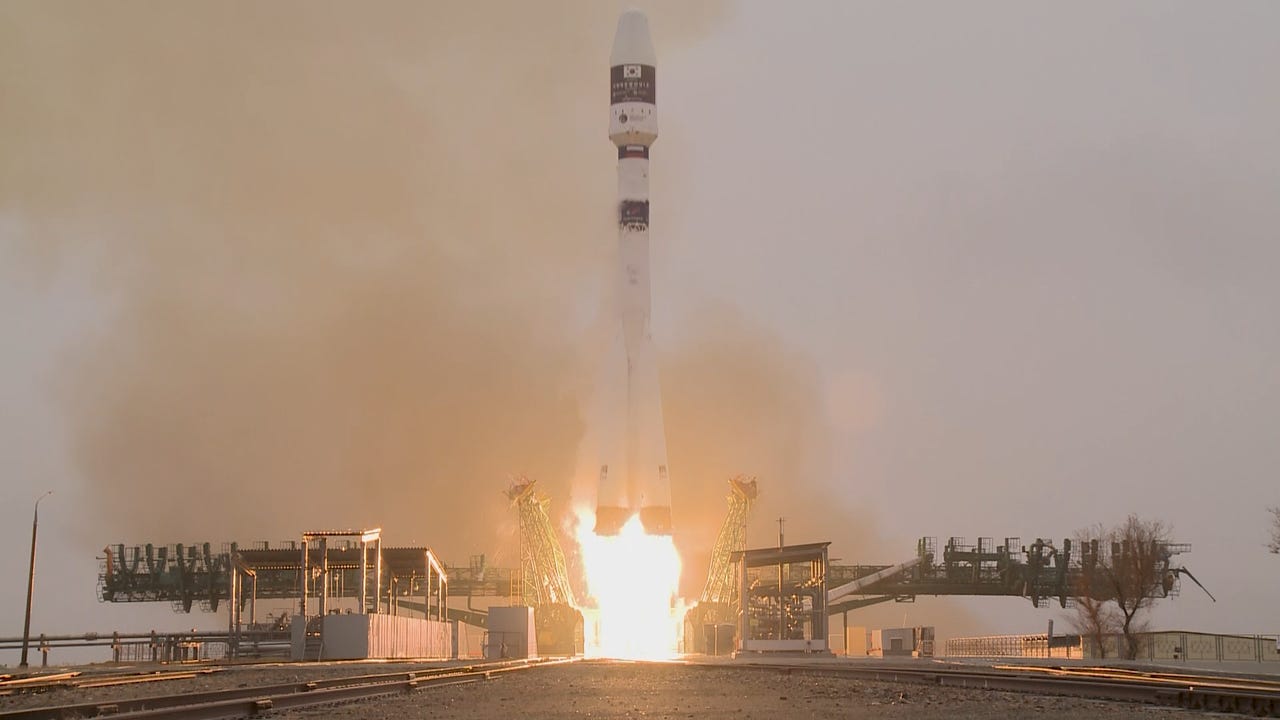'Catalan NASA' heads into orbit with Catalonia's tiny Enxaneta satellite


Enxaneta begins its journey into space.
When the Catalan government talked about the 'Catalan NASA' concept a few months ago, while announcing it was investing €2.5m to establish its own space agency – and a further €18m in launching six nanosatellites – there was a certain amount of scepticism, if not outright disbelief.
Still, its first nanosatellite is now in orbit, and you can track its current position through the Institute of Space Studies of Catalonia (IEEC, in Catalan) website.
Networking
The nanosatellite took off in late March from the Baikonur Cosmodrome in Kazakhstan, aboard a Soyuz 2 rocket hosting 38 satellites from 18 different countries. The event was followed by Catalan authorities and researchers from the CosmoCaixa science museum in Barcelona and streamed live online.
SEE: Research: Why Industrial IoT deployments are on the rise (TechRepublic Premium)
Jordi Puigneró, the Catalan digital policy and public administration minister, made it clear that the launch is part of laying the foundations for any citizen of Catalonia to have the same economic opportunities. "Connectivity is a powerful instrument of progress for everyone, a social right," he said.
Daniel Marco, Catalan's government director general of innovation and digital economy, echoes that sentiment: "So far, space was reserved for great powers, but the emergence of nanosatellites opens new opportunities for companies, startups or countries like Catalonia to develop in this area."
Enxaneta, formally 3B5Gsat, is a CubeSat the size of a shoe box (10x10x10) composed of three units and weighing in at about 10 kg. This is important considering that launching 1kg into orbit can cost up to 50,000 euros.
It travels at a speed of about 7 km/s and gives a complete lap to Earth every 90 minutes, which means it passes over Catalonia twice a day. Unlike large geostationary satellites, which are located up to 36,000 kilometers, Enxaneta operates in a low orbit of about 550km; approximately the distance from Barcelona to Madrid.
All the data collected in its wake from about 100 sensors spread across Catalonia is transmitted to a station located in the Montsec Astronomical Observatory (OAdM) and managed by the Institute of Space Studies of Catalonia (IEEC). This data will initially be used by the Catalan government.
"It will help us measure the flow of rivers, the humidity of crops and also to position herds or control large predators," Marco tells ZDNet. "The idea is that Enxaneta captures data in places where there is no mobile or fiber optic coverage", he adds.
Getting much useful information might seem difficult to achieve when considering the nanosatellite only passes twice above Catalonia – and at a pretty fast pace.
But the idea is that within the next three years the Catalan government plans to launch up to six nanosatellites that will work in an open constellation. This low-orbit constellation is the way to provide coverage to expand IoT services over the territory, explains Miquel Sureda, a physicist and doctor in aerospace engineering at the Polytechnic University of Catalonia (UPC) who participated in the CosmoCaixa event.
"It is very important to invest in space because all euros or dollars that are invested in space result in a very positive impact on society," says Sureda.
The name 'Enxaneta' was voted by 10,000 children of Catalonia after the Catalan tradition of building human towers. The 'enxaneta' is the kid who climbs on top of the tower and raises their hand to show it has been successfully completed. Hence, the name conveys the proudness of an incredible achievement.
Enxaneta is not the first Catalan nanosatellite to be placed in orbit. The Nanosat Lab from the Polytechnic University of Catalonia (UPC) previously developed other small satellites and placed the first one in orbit in August 2016.
Moreover, last year two additional small satellites, created by the Nanosat Lab, travelled to space to study polar regions, and provide Earth observation images by using artificial intelligence.
The idea is that the tiny fleet of nanosatellites included in the Catalan government's space strategy will grow the aerospace sector in Catalonia, and boost interest in scientific careers, says Mariona Badenas, a researcher at the Massachusetts Institute of Technology (MIT) and contributor at IEEC.
Enxaneta, which has been developed by the companies Open Cosmos and Sateliot through a contract tendered by the IEEC, could last 25 years, but it will realistically operate for a period of three or four years until the friction with the atmosphere will force its disintegration. But before that happens, the second Catalan's government nanosatellite will be launched: likely by the end of 2021 or the beginning of 2022.
The Catalan government's space strategy, supported by the European Funds of Regional Development, is about more than just the satellites themselves.
The aim is to boost the deployment of the Catalan aerospace ecosystem which comprises more than 30 start-ups, 13 research and innovation centers, as well as a business incubator from the European Space Agency (ESA BIC Barcelona).
SEE: Gilmour Space and Fleet Space to lift small satellites into orbit in 2023
Barcelona hosts some of the main actors of the ecosystem: the UPC and its NanoSat Lab, the Institute of Space Studies of Catalonia, the internet research center I2CAT Foundation and the non-profit research institution Centre Tecnològic de Telecomunicacions de Catalunya (CTTC), which are bringing their experience of how new 5G services can impact this emerging sector.
"We're doing things pretty well in Barcelona", said Mireia Colina, space business developer at software company GTD CosmoCaixa. For example, the system allowing the Soyuz rocket to be tracked is developed in the city, she said.
The co-developer of the Enxaneta, Sateliot, agrees that opportunities are there. In fact, it plans to offer "near real-time global and massive coverage" to its customers as it expands its nanosatellite constellation to more than 16 devices by 2023 to reach 96 devices by 2025.
All in all, it is estimated that the development of this new economy with high added value will generate 1,200 new jobs over the next four years and 280 million euros in turnover. The Marco considers these forecasts are quite conservative as ESA BIC wants to incubate 24 new companies within three years.